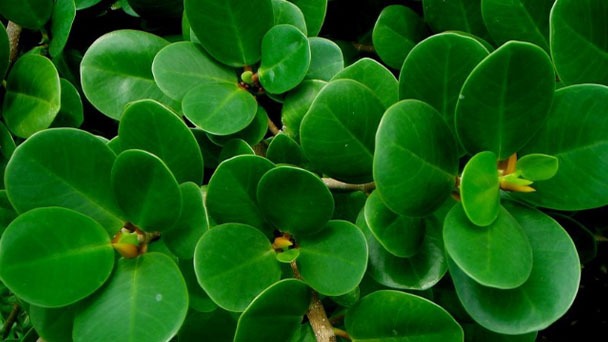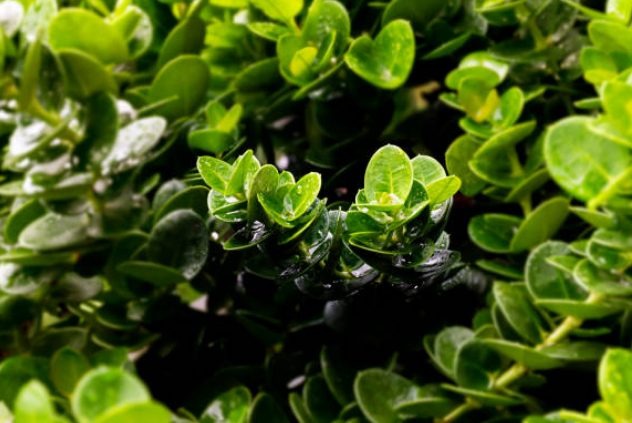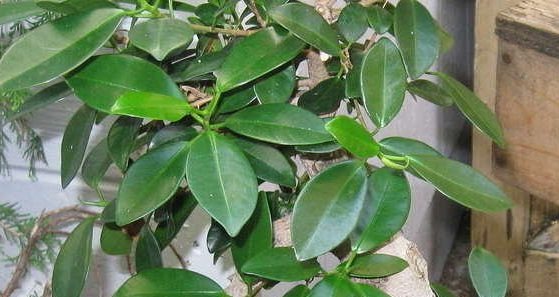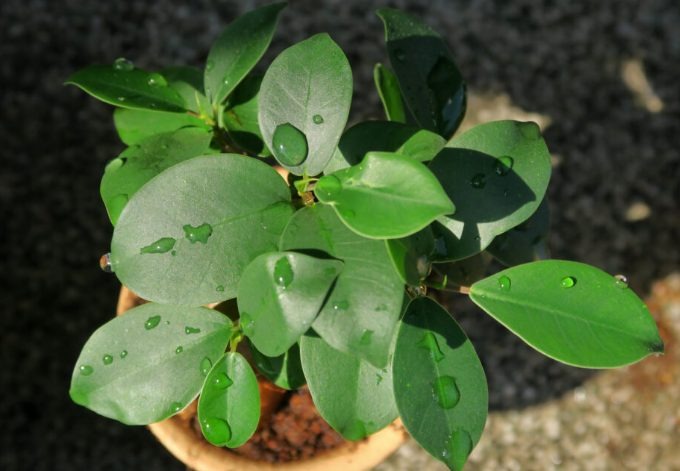How to Care for Green Island Ficus Tree - A Simple Guide
Written by Ivy
Jan 09 2023

The green island ficus can blend in with almost any garden and landscape design, but how do we take care of these famous garden beauties? We'll go over how to grow green island ficus successfully and where to put it in your garden below.
In general, gardeners prefer the green island ficus. You can save time and labor in the garden by using this low-maintenance plant with its rounded, gleaming green leaves. These plants have left their mark on countless gardens and landscape designs over the years, as I have witnessed.
Green Island Ficus at a Glance

The jade plant's leaves are strikingly similar to the glossy, dense green leaves of the Green Island Ficus. Due to its versatility and ability to fit into any indoor space, this tiny houseplant is a favorite among most homeowners.
If you manage to give it the growing conditions it's been natively accustomed to, it could reach up to 20" feet tall and develop a gigantic canopy, especially when grown outdoors. But the majority of those offered in nurseries and gardening supply stores across North America are typically smaller in size.
They would reach up to 8" feet tall when they're under neglect. This Ficus variety is ideal for ground cover in addition to being used as an outdoor border plant. Regularly trimming it will allow you to adjust its shape so that it is the ideal size and height for you. You should trim it when the sprouts are young if you want it to resemble a Japanese bonsai tree as closely as possible.
Green Island Ficus Caring Tips
Flowering & Fragrance
Even in the best growing season and nurturing conditions, the Green Island Ficus hardly ever bears any flowers, which is quite frustrating. As a result, do not anticipate a blooming stage, as is the case with other species of the Moraceae family. Instead, you should think about cultivating this epiphyte for your garden because its lush green flowers would make excellent borders.
Light & Temperature
Considering that the Ficus is a tropical plant, you would anticipate that it would thrive in warm, muggy weather. This shrub, which displays tropical characteristics, thrives in the wild in USDA hardiness zones 9 through 11.
If your area experiences cold and dry seasons, growing your green island Ficus indoors in a container is ideal because you can bring it inside when the temperature drops sharply. When cultivating it outdoors, give it plenty of bright light, but you should also think about giving your Ficus plant some shade to prevent sunburned leaves.
It is perfect for filtering the sun's rays, which helps the soil retain some moisture bits, if the humidity levels are low and the surrounding air is too dry. If growing indoors, ensure that your ficus receives at least 6 hours per day of bright indirect light.
Most skilled gardeners place the container in an enclosed porch because it can trap more humidity there than other areas of the house, like a windowsill, can. Although it thrives in a warmer environment, this houseplant can tolerate low temperatures of 20 to 30 degrees Fahrenheit.
The majority of the time, however, it requires a frost-free environment, so bringing your Ficus indoors and adjusting the room temperature during the winter would greatly benefit its health.
Watering & Feeding
There aren't any particular watering requirements for the Green Island Ficus. Until it reaches maturity, you can water it quite frequently during the warmer months, such as twice or three times per week. Your Ficus needs to be watered using the "soak and dry" method.
Make sure your growing container has enough drainage holes to let out any extra water that could harm the roots. To prevent diseases brought on by overwatering, wait until the soil has completely dried out before watering your ficus plant once more.
Although this houseplant can tolerate some drought, that does not mean you should completely ignore it. Water your green island evenly if you're growing it outside, especially if rainfall patterns are irregular.
Although using fertilizer isn't necessary, it can definitely help, especially if you want a robust, evergreen houseplant. Each four weeks in the spring and summer, apply soluble fertilizer. When the growth hormones are dormant in the winter, avoid fertilizing your green island.
Soil & Transplanting
To create the growing medium, you must use regular potting soil with adequate drainage. With the exception of extreme cold or low humidity, the Green Island Ficus doesn't have particularly high soil or transplant requirements.
Peat moss would help the soil retain some moisture, and compost manure would reduce the need for synthetic fertilizers, which have their own set of negative effects. Since this particular variety of Ficus grows slowly by nature, you won't need to transplant it into a larger container any time soon after getting it.
But if it is necessary, spring is one of the best times to transplant it because this is when the growth hormones are most active. Green islands have a tendency to spread out as they mature, so if you want to grow more than one of them, space them about 2 to 3 feet apart.
Grooming & Maintenance
Being a small houseplant, grooming is rarely necessary, unless certain parts of the plant seem a little strange. Remove any leaves that appear wilted or to have bacterial infections. To avoid spreading diseases that are frequently difficult to treat to other parts of the plant, be sure to sterilize your pruning equipment.
Getting rid of the dead branches and leaves will help your growth rate to accelerate. Only twice a year, if no alarming conditions are developing on the leaves or branches, can you trim your Ficus. However, you can control the size a lot more frequently if you prefer your ficus to be short and even.

Pruning
Remove any dead branches from your bonsai to promote bushy growth.
Some bonsai hobbyists favor keeping their plants small and pruning them frequently. Make sure to cut off any dead branches that are close to the stem if you are like them. To control the size, prune the bonsai above a leaf bud.
Note for Green Island Ficus Bonsai care:
- The Green Island Ficus is a slow-growing plant, as we already mentioned. Only do it once or twice a year.
- Although there are many different pruning tools, the most popular ones for small plants are hand shears and loppers.
- For mature bushes, you can also find tree saws or pole pruners.
- Winter and the early spring are the least active seasons for Green Island Ficus Bonsai plants. The time to prune them is then.
- Use gardening gloves when handling Green Island Ficus Bonsai to prevent skin irritation from the milky sap found on the leaves.
Pests & Diseases
This variety's impressive lack of serious pests or diseases is what makes it stand out. Mealybugs and scale insects are usually the only pests you'll encounter because they prefer the underside of the leaves as a place to live. Spray neem oil primarily on the troublesome areas as a preventative measure.
Yellow spots developing on the leaves, according to a report from the Department of Agricultural Sciences at Pennsylvania State University, may indicate that you're watering your green island ficus from above. Such a condition is typically brought on by a fungal infection, and a simple home remedy is to spritz baking soda on the areas that seem to be particularly affected.
If the yellow spots start to turn brown and the leaves start to fall off, your plant may have a bacterial infection. If the soil is dry and the humidity is low, the same circumstances might also exist. Your Ficus' leaves will become irreparably damaged if you plant it close to an air conditioner.
Scale
Small, pest-like bumps that are lined on the stem and are either black or white.
Use chemicals to treat your soil or pesticides to spray it, just like with mealy bugs.
Centipedes
They attack the roots of your plants and are brown with numerous legs.
The only way to completely destroy indoor plants is to remove all of the soil and replant it in sterilized soil.
Before using the container once more, clean or scrub it.
Anthracnose Disease
This illness is caused by a fungus that attacks the leaves and branches.
The plant that is being attacked will display symptoms on the leaf margins, but as the disease worsens, all of the leaves will turn yellow, then brown, and eventually drop off.
Apply pesticides regularly every 7 to 10 days during the rainy season when the fungus is most active.

How to Propagate the Green Island Ficus
Cuttings of roots are used in propagation. It should be noted that the stem takes longer to spread than the roots. In order to spread the plant and encourage the growth of new ones, you can divide and separate them.
Young plants can be cut, their roots dipped in root hormone, and then they can be planted in a different starter container. Do not cover it with plastic, please. Instead, simply place the plant close to a window and give it regular waterings.
After a few weeks, you should see the roots developing into a new plant. Then you can think about planting it in the ground or keeping it in the container to grow a small bonsai.
Benefits & Uses of the Green Island Ficus
Most gardeners use this particular Ficus variety as a foundation shrub or for bordering purposes. As long as the room's growing conditions are appropriate for the plant's overall development, it can also be grown indoors without any problems. It develops into a bush that can be trimmed into a miniature bonsai tree when placed in a big container.
This Ficus variety can be grown next to a fence or in the vicinity of trees whose canopies allow light to pass through. The best thing about it is that even as it ages, it hardly ever needs to be transplanted into a larger container because it isn't invasive.
Conclusion
This lovely plant, which can be used for a variety of things in the garden—including ground covers, hedges, walkway edging, and foundation planting—should be included in every garden.
Try this plant if you're looking for one that requires little upkeep. This plant is worth investing in even though it grows slowly, and even though it has few pests and diseases, they are easy to manage and treat.
Latest Updated
- Benefits of Bugleweed - 7 Science-backed Health Benefits
- Bugleweed Dangers & Side Effects - Is It Poisonous?
- How to Plant Evergreen Trees - What You Should Know
- When to Plant Evergreens - Grow Guide for Evergreen Trees
- 12 Wonderful Evergreen Shrubs for Your Garden
- 12 Popular Evergreen Plants with Pictures for Beginners
- When And How To Prune A Lilac Bush Like a Pro
- How to Grow & Care for Lilac Vine (Hardenbergia Violacea)
- Japanese Lilac Tree (Syringa Reticulata) Care & Propagation Guide
- Shumard Oak Pros and Cons - What to Know
Popular Articles
- Winter maintenance of Antirrhinum Majus
- How to Grow Terminalia Mantaly Tree
- How to Grow and Care for Crossostephium Chinense
- How to grow Antirrhinum Majus in spring
- Peristeria Elata (Dove Orchid) Profile: Info & Care Guide
- Underwatered Snake Plant (Sansevieria Trifasciata) - Signs And How To Fix
- How to Care for Brazilian Jasmine Plant (Mandevilla Sanderi)
- How to Grow & Care for Graptopetalum Purple Delight in Summer
- Rosa Chinensis (China Rose): Plant Growing & Care Tips
- How to Care for Baby Sun Rose (Aptenia Cordifolia)